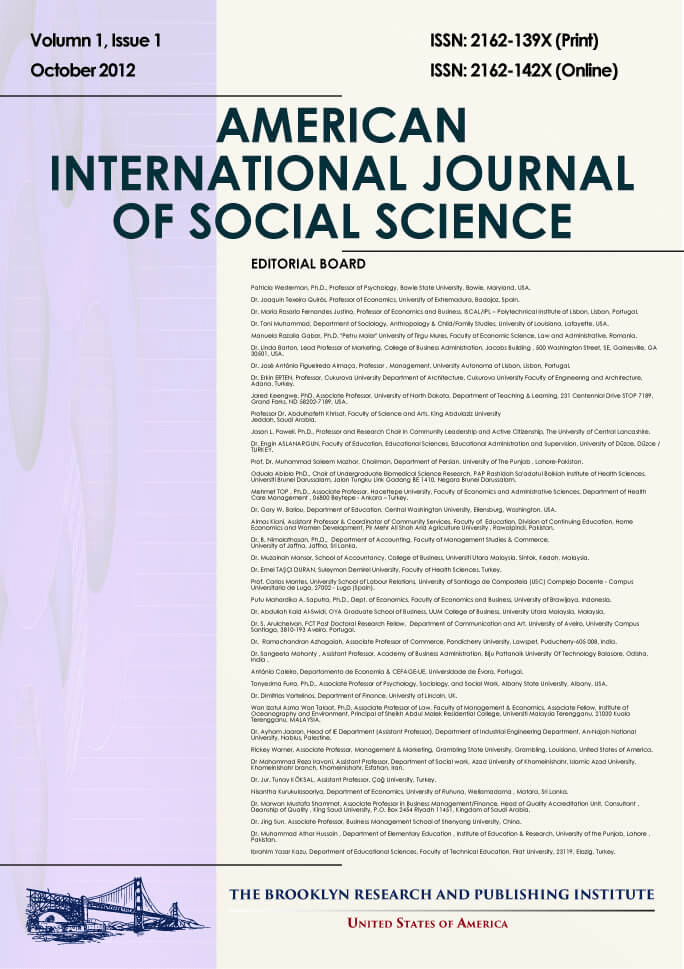Accessibility and Utilization of HIV and Aids Services among the Visually Impaired Persons in Kenya
Dr. Yungungu Alice, A. Songok, Mulinge Patrick
Abstract
HIV and AIDS has had a devastating social and economic impact in Africa. The continent is losing a lot of
resources in form of reduced work productivity, absenteeism from work, deaths and funeral expenses,
replacements and training of new personnel. The situation regarding the disabled and HIV and AIDS in Africa is
in need of more attention because they are more susceptible to contracting HIV and AIDS compared to their nondisabled
peers. Many programmes and campaigns to create awareness on how to prevent, manage and live
positively with HIV and AIDS have been set up in Kenya by the government, international agencies,
nongovernmental organizations, faith-based organizations and community based organizations. These
programmes and campaigns however are rarely made accessible to the visually impaired persons for instance,
information is not provided in accessible formats like Braille and large print, and they have limited or no
knowledge of how to live with HIV and AIDS or how to care for others with the disease. It is also evident that
there are cases of illiteracy among visually impaired persons particularly in rural settings. Lack of skills is also
an impediment to health practitioners in providing HIV and AIDS services to the visually impaired. As a result,
support services are not modified to suit the needs of the visually impaired. Additionally, the infected persons
receive little support from the community due to social stigmatization thus accelerating their immunity deficiency.
In some circumstances, the vulnerability of the visually impaired persons to HIV is exacerbated by traditional
beliefs and myths which presume visually impaired persons to be at no risk of contracting HIV and as a result
they are excluded from voluntary counseling, testing and treatment facilities. This paper therefore seeks to
address the plight of the visually impaired persons in accessing and utilizing HIV and AIDS services in Kenya.
Based on these challenges, recommendations will be made on the ways and means of making these services more
accessible to the visually impaired persons. As a result, it is expected that this will increase the degree of
utilization of the available HIV and AIDS services by the visually impaired persons with the intent of eradicating
the HIV and AIDS scourge in Africa and Kenya in particular.
Full Text: PDF
American International Journal of Social Science
ISSN 2325-4149(Print), ISSN 2325-4165(Online) DIO: 10.30845/aijss
Visitors Counter
3837961
| 2332 | |
| |
3980 |
| |
45319 |
| |
49499 |
| 3837961 | |
| 74 |

